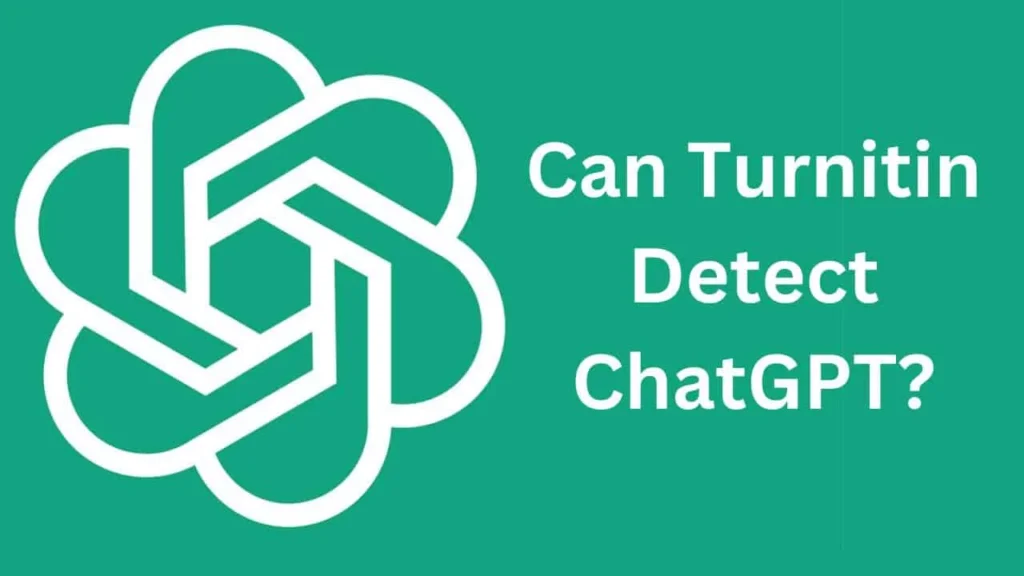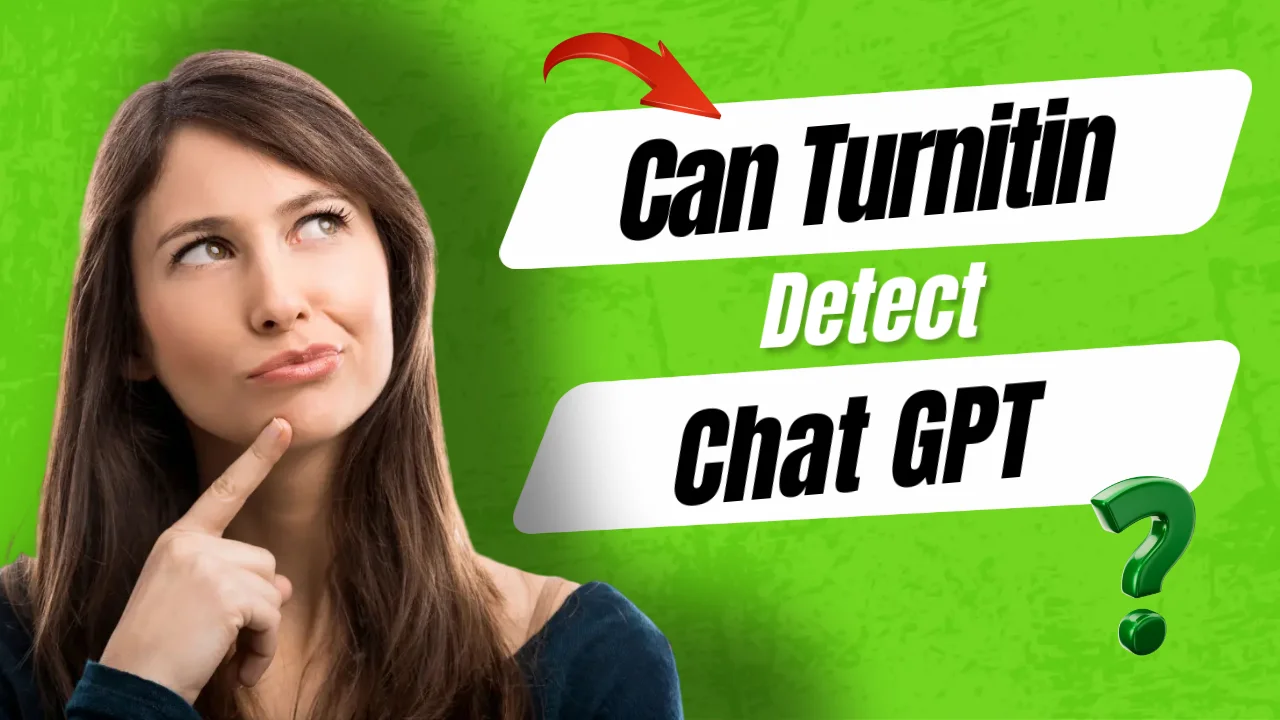In the realm of academia, the issue of plagiarism detection has become increasingly complex with the emergence of advanced artificial intelligence (AI) technologies. One such technology, Chat GPT, has raised questions about its detectability by Turnitin, a popular plagiarism detection tool used by educators and institutions worldwide.
This article aims to delve into the truth behind AI detection and explore “Can Turnitin detect Chat Gpt-4” efficiently. By examining the capabilities and limitations of both Chat GPT and Turnitin, we will uncover the challenges faced in detecting Chat GPT-generated content and discuss strategies to minimize the risk of such content going undetected.
Furthermore, we will reflect on the implications of Chat GPT’s presence in academia and its impact on the future of AI in educational settings.
Understanding Turnitin and Chat GPT

Understanding Turnitin
The functionality and effectiveness of Turnitin in detecting chat GPT plagiarism can be better understood by examining its approach to AI detection.
Turnitin employs a sophisticated algorithm that compares submitted texts to a vast database of academic and web-based sources. It analyzes linguistic patterns, sentence structures, and vocabulary choices to identify potential instances of plagiarism.
While Turnitin is highly effective in detecting verbatim copying and paraphrasing, it may struggle with detecting plagiarism in chat GPT due to the conversational nature and lack of extensive sources in its database.
Introduction to GPT and Chatbots
With a solid understanding of Turnitin’s approach to AI detection, we can now delve into the world of GPT and chatbots to explore their relationship with plagiarism detection.
GPT (Generative Pre-trained Transformer) is a state-of-the-art language model that can generate human-like text.
Chatbots, on the other hand, are AI-powered programs designed to simulate human conversation.
When combined, GPT-based chatbots can generate realistic and coherent responses.
However, the question remains: Can Turnitin effectively detect plagiarism in chatbot-generated text?
Can Turnitin Detect Chat GPT-4?

Understanding the Capabilities of Turnitin in Detecting Chat GPT
Turnitin’s ability to detect Chat GPT can be better understood through an examination of its capabilities in AI detection. While Turnitin primarily focuses on detecting plagiarism in academic papers, it does have some capabilities in detecting chat-based content.
However, it is important to note that Turnitin’s effectiveness in detecting Chat GPT may vary. Its ability to identify instances of chat-based plagiarism heavily relies on the quality of the training data and the specific algorithms used for detection.
- Turnitin’s AI detection algorithms analyze text patterns and similarities.
- It compares submitted content with its extensive database of academic papers and online sources.
- Turnitin also utilizes machine learning techniques to improve its detection accuracy over time.
Effectiveness of Turnitin in Detecting Chat GPT

To further delve into the effectiveness of Turnitin in detecting Chat GPT, it is important to consider its capabilities in analyzing chat-based content for potential instances of plagiarism.
While Turnitin is primarily designed to detect similarities in academic papers, it may also flag chat-based content if it contains text that matches previously submitted documents or known sources.
However, it is worth noting that Turnitin’s effectiveness in detecting Chat GPT may vary depending on the quality of the generated text and the sophistication of the AI detection algorithms.
challenges and Limitations of Turnitin in Detecting Chat GPT
The challenges and limitations faced by Turnitin in detecting Chat GPT present significant obstacles in accurately identifying instances of plagiarism. Despite its effectiveness in detecting traditional forms of plagiarism, Turnitin struggles to handle the complexity and nuances of chat-based content generated by Chat GPT. This is primarily due to the unique nature of chat conversations, which often contain informal language, slang, and context-specific references. As a result, Turnitin’s algorithms may struggle to accurately identify instances of plagiarism in chat-based content.
- Informal language and slang used in chat conversations pose challenges for Turnitin’s language analysis.
- Context-specific references and inside jokes can make it difficult for Turnitin to determine originality.
- Turnitin’s inability to comprehend the underlying context of chat conversations hinders its accuracy in detecting plagiarism.
Is Chat GPT a Challenge for Turnitin’s Plagiarism Detection
Chat GPT poses a significant challenge for Turnitin’s plagiarism detection due to its advanced language generation capabilities. Chat GPT, powered by OpenAI, is an AI model that can generate conversational responses that are highly realistic and difficult to distinguish from human-generated content.
This poses a problem for Turnitin’s plagiarism detection system, which relies on identifying similarities between submitted texts and existing sources. As Chat GPT can generate unique and contextually appropriate responses, it becomes more challenging for Turnitin to accurately detect instances of plagiarism involving Chat GPT-generated content.
Strategies to Minimize the Risk of Chat GPT Going Undetected by Turnitin
Implementing effective measures is crucial to mitigate the risk of Chat GPT evading detection by Turnitin. To minimize this risk, institutions can consider the following strategies:
- Enhance training: Educate teachers and students about the potential pitfalls of using Chat GPT to deceive plagiarism detection systems.
- Develop specific detection algorithms: Continuously update Turnitin’s algorithms to identify patterns and language unique to Chat GPT-generated content.
- Encourage originality: Promote a culture of academic integrity and emphasize the importance of original work to discourage the use of Chat GPT for plagiaristic purposes.
Chat GPT and the Future of AI in Academia
To ensure academic integrity and stay ahead of the evolving landscape of AI, institutions must explore the potential impact of Chat GPT on the future of academia. Chat GPT, an advanced language model, has the potential to revolutionize communication and learning in academic settings.
However, it also raises concerns about plagiarism detection and the reliability of assessment tools like Turnitin. Institutions must adapt to this new technology by developing robust detection methods and incorporating AI into their academic processes to maintain the integrity of education.
| Chat GPT in Academia | Potential Impact |
| Enhanced communication | Improved collaboration and engagement among students and teachers |
| Personalized learning | Tailored educational experiences based on individual needs and preferences |
| Ethical considerations | Addressing concerns regarding plagiarism detection and academic integrity |
| Integration challenges | Developing effective strategies to integrate Chat GPT into existing academic systems |
FAQs on can Turnitin detect chat gpt-4
Can Turnitin Detect Plagiarism in Languages Other Than English?
Turnitin is primarily designed to detect plagiarism in English language texts. However, it does have the capability to analyze texts in other languages to some extent, but its effectiveness may vary depending on the language and available resources.
How Does Turnitin Handle Plagiarism in Multimedia Content, Such as Videos or Audio Recordings?
Turnitin handles plagiarism in multimedia content, such as videos or audio recordings, by utilizing advanced algorithms that compare the submitted content with a vast database of academic material to identify any similarities or instances of potential plagiarism.
Does Turnitin Have a Specific Threshold for Determining the Level of Plagiarism in a Document?
Turnitin does not have a specific threshold for determining the level of plagiarism in a document. Instead, it generates an Originality Report that highlights similarities to other sources, leaving it to instructors to assess the severity of the plagiarism.
Can Turnitin Detect Paraphrasing or Rewording of Sentences to Avoid Plagiarism Detection?
Turnitin is a plagiarism detection software widely used in academia. It analyzes text for similarities with existing sources to identify potential instances of plagiarism. It is designed to detect paraphrasing and rewording techniques used to avoid detection.
What Measures Does Turnitin Have in Place to Prevent False Positives or Incorrect Plagiarism Detections?
Turnitin implements various measures to mitigate false positives and incorrect plagiarism detections. These include advanced algorithms, machine learning techniques, and human expert reviews. These measures ensure the accuracy and reliability of the plagiarism detection system.
Conclusion on “Can Turnitin detect ChatGPT?”
In conclusion, Turnitin’s ability to detect Chat GPT remains a topic of debate. While it may currently struggle to identify text generated by Chat GPT as plagiarism, strategies can be implemented to minimize this risk.
As AI continues to advance, the future of AI in academia holds both opportunities and challenges. It is imperative for educators and institutions to stay informed and adapt their plagiarism detection methods accordingly.
The accurate detection of AI-generated content will be crucial to maintaining academic integrity in the digital age.
